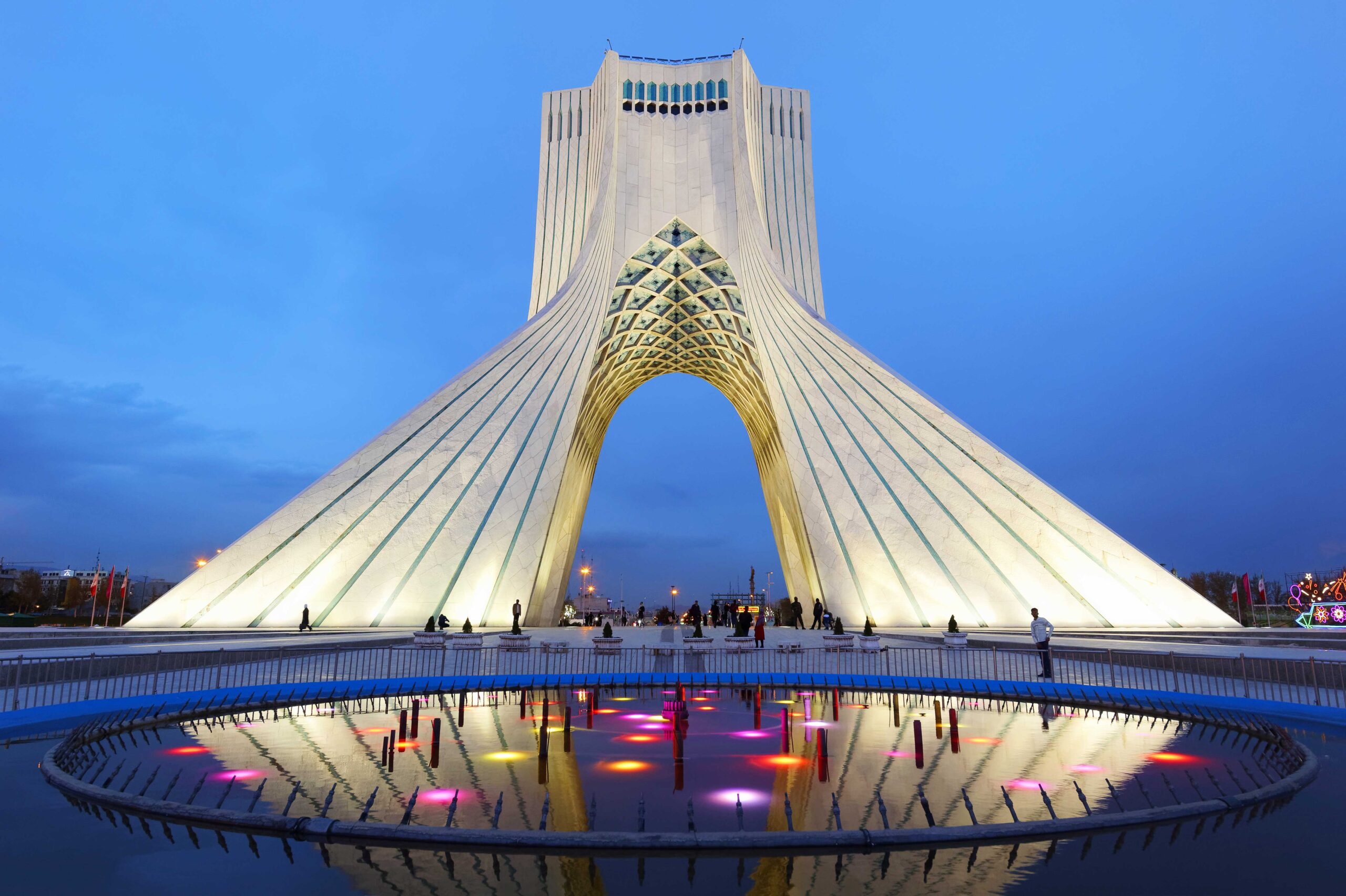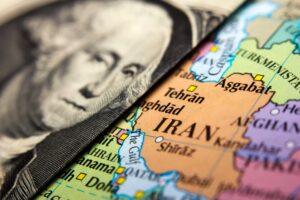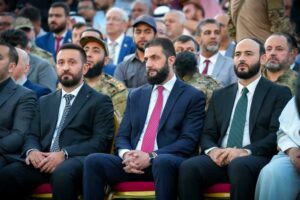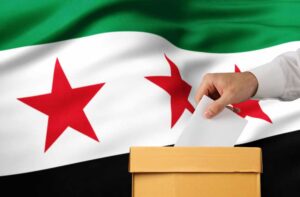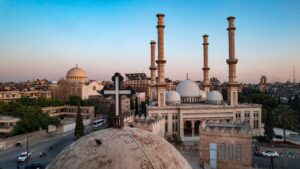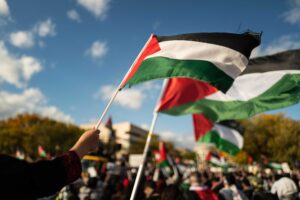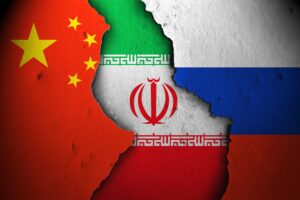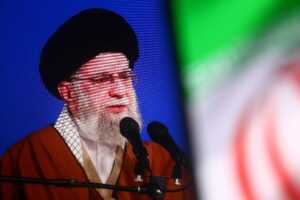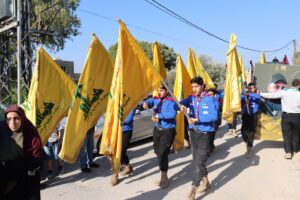The 8 December capture of Damascus by Syrian rebels and the departure of Bashar al-Assad to Moscow, marked the end of a 54-year-long Assadist dictatorship in Syria, which began with the 1971 ascension of Hafez al-Assad to power.
In late 2012, after Damascus’ repression of widespread anti-regime protests led to the outbreak of the Syrian Civil war, Lebanese Hezbollah, an ally of Tehran, intervened in support of the Assad regime. Hezbollah’s late 2012 intervention was reportedly followed by direct intervention by Iran, with the Islamic Republic sending a contingent of forces in support of Assad in 2013.
Iranian intervention in support of the Syrian regime was predicated on two key factors. Firstly, by Iran’s calculations, the fall of the Assad regime in Syria could catalyse the ascendence of militant Sunni Islam, which at the time, was perceived as an existential threat to the survival of the Islamic Republic. Secondly, Syria represented Iran’s only state ally in the ‘Axis of Resistance’, a loose coalition of several regional actors including Tehran, Damascus, and non-state actors such as the Islamic Resistance in Iraq, Lebanese Hezbollah (LH), Hamas, and by 2014, Ansarallah, also known as the Houthis, in Yemen. These actors were unified by their anti-US and anti-Israel stance, and their focus on what they described as the liberation of Palestine.
The 8 December fall of the Assad regime in Syria, came against the backdrop of a year-long conflict between the Axis of Resistance, and Tel Aviv, on every military front except the Golan arena. This conflict, which emerged in the aftermath of 7 October and Israel’s military operation in Gaza, has seen the weakening of Hamas, and the assassination of much of Hezbollah’s top cadre of leaders, including Hassan Nasrallah, Hashem Safiedenne, and Fuad Shukr, many of whom played key roles in the coordination of the wider Axis of Resistance, as well as Hezbollah itself. The fall of Assad against this backdrop, and the loss of Syria as a supply route between Iran and Lebanese Hezbollah, has significant implications for both Iran’s regional affiliates, and the trajectory of Iranian foreign policy. However, even prior to both 7 October, and the fall of the Assad regime, the 2020 assassination of Qasem Soleimani, new directions in Iranian foreign policy and state-building efforts in the countries where Iranian affiliates are active had laid the groundwork for recalibrations of Tehran’s regional policies.
Against the backdrop of shifts in Iran’s regional strategy, the imminent advent of a second Trump administration in the White House and discussions around Iran’s nuclear program will also shape the trajectory of Iran’s foreign policy in the region.
Redefining the Axis
The Islamic Republic has repeatedly demonstrated its ability to reconceive the nature of the Axis of Resistance, both militarily and ideologically, as well as strategically, to respond to the geopolitical climate of the time. As such, while there is often consistency in the Axis of Resistance’s overarching anti-US, anti-Israel stance, other elements of each actors’ geopolitical stance have repeatedly been redefined.
Despite Tehran’s claims that Ansarallah operates independently of Iran, many analysts have held Iran responsible for the 2019 Ansarallah attack on Saudi Arabia’s ARAMCO facilities, which occurred against the backdrop of the 2018 US withdrawal from the Iran nuclear deal, Iran’s regional isolation, and strained relations with Riyadh. By contrast, after the March 2023 Beijing-brokered Saudi-Iran rapprochement, Ansarallah and their affiliates in the Islamic Resistance in Iraq (IRI) umbrella organisation have refrained from targeting the Kingdom, even while perceiving Riyadh as ‘complicit’ in Israel’s war on Gaza.
Strategic recalibrations have also been observed in Tehran’s relationship with its affiliated groups in Iraq. While Iraqi organisations such as the Badr Organisation (then Badr Brigades) functioned as proxies for Iranian interests during the Iran-Iraq war, and played a key role in the US-Iraqi militia conflict that culminated in the 2020 assassination of Qasem Soleimani, groups such as AAH, and the Badr Organisation, have increasingly embedded themselves in Iraq’s political system, and are unwilling to see Iraq utilised as an arena for Iranian conflict with either Israel or the US. In addition, the ability of the central government in Baghdad, under Iraqi PM Mohammad Shia’ al-Sudani’s direction, to reign in the anti-US and anti-Israeli activity of Iraqi militias uninvolved in the political process has played a role in shaping Tehran’s decision to engage with Iraq in a more bilateral, as opposed to proxy, capacity.
While the loss of the Assad regime remains a significant strategic blow to the Islamic Republic... Syria’s role in the Axis of Resistance over the last year had become increasingly nominal.
A similar willingness to allow for the redefining of its regional relations, has also in part, shaped Iran’s role, or lack thereof, in the events that led to the fall of the Assad regime on 08 December. While Syria represented Iran’s only state ally in the Axis of Resistance, the Assad regime’s lack of support for the wider Resistance’s war with Israel over the last year increasingly diminished Tehran’s willingness to intervene in support of its once key ally. Since 7 October 2023, Israel’s attack on Iran’s diplomatic compound in Damascus, and the repeated Israeli targeting of Iranian forces in Syria went unaddressed by the Assad regime. In addition, in the immediate aftermath of 7 October, Damascus expelled the Ansarallah diplomatic mission from Syria’s Yemeni Embassy. As such, while the loss of the Assad regime remains a significant strategic blow to the Islamic Republic, particularly as it constitutes a loss of a supply route to Hezbollah, and the potential loss of the foreign debt Damascus owes to Tehran, it is worth highlighting that Syria’s role in the Axis of Resistance over the last year had become increasingly nominal.
Against the backdrop of the fall of the Assad regime, the Islamic Revolutionary Guard Corps Quds Force (IRGC-QF), reportedly established contact with ‘groups’ in Syria to secure guarantees for the protection of the Iranian embassy, and the Shi’a shrines in Syria. For the Syrian rebels, led by Hayat Tahrir al-Sham (HTS), both Iran and Hezbollah’s support for the Assad regime during the Syrian Civil War will be a significant impediment to the establishment of strong ties with Tehran. However, Iran, in a statement published on 8 December, has already called for the continuation of Iran-Syria relations “based on common interests”. This development is indicative of the fact that while Iran has repeatedly sought to leverage a transnational Shi’a identity in support of its geopolitical objectives, the Islamic Republic is willing to ally with others outside of this framework for political expediency. This is further evidenced by Tehran’s coordination with Moscow, the Sunni Palestinian group Hamas, and even its decade-long support for Bashar al-Assad’s secular, Baathist regime.
Against the backdrop of a continuing engagement of much of the Axis with Israel, and cognisance in Tehran that a continuation of a direct conflict with Israel remains possible, Iran is likely to seek to recalibrate existing relationships with Resistance actors, and leverage new partnerships with actors across the religious and sectarian spectrum to ensure the survival of the Islamic Republic.
Restoring deterrence
Irrespective of Iran’s demonstrated ability to recalibrate its regional relations in response to shifting geopolitical landscapes, the fall of the Assad regime, in conjunction with the effect of the Israeli attack on other Axis members, has significantly weakened Iran’s deterrence capabilities in the short to medium term. Against this backdrop, there are increasing concerns around the potential weaponisation of the Iranian nuclear program, despite Supreme Leader Ali Khamenei’s long-standing opposition to its militarisation.
A weaponisation of Iran’s nuclear program would bring Iran into direct conflict with both Tel Aviv, and Washington, an eventuality that the Islamic Republic has repeatedly sought to avoid. It would also further undermine the utility of Iran’s proxy warfare, the function of which has historically been to allow Iran to exert its influence and maintain a deterrence capability with minimal military repercussions for the Iranian population.
Furthermore, against the backdrop of the imminent return of former president Donald Trump to the White House, Tehran has actively sought to engage in dialogue with Washington. President Masoud Pezeshkian has repeatedly stated that Iran is ready to hold direct talks with the US, with a view to easing sanctions on the Islamic Republic. Iranian Foreign Minister Abbas Araghchi has also emphasised Tehran’s readiness to resume nuclear negotiations with the West. On the US side, incoming US President Trump has also implied that Washington does not seek regime change Iran and would like to see Iran return to the nuclear negotiating table.
An absence of diplomatic engagement with the US could lead to the resumption of the ‘maximum pressure‘ campaign launched by Donald Trump in his first presidential term, when the US unilaterally withdrew from the landmark 2015 Iran nuclear deal, also known as the Joint Comprehensive Plan of Action (JCPOA). The resumption of this intensified sanctions regime would further weaken the Islamic Republic’s domestic stability at a time of weakened regional influence, and increasing social and economic discontent within Iran. According to reports, the US president elect has also considered the use of preventative airstrikes against Iran’s nuclear infrastructure.
Trump administration and a grand bargain
One of Trump’s key objections to the landmark 2015 Iran nuclear deal, also known as the Joint Comprehensive Plan of Action (JCPOA), was the agreement’s failure to address other elements of Iranian foreign policies considered ‘malign’, by Washington, the first among them, Tehran’s support for regional non-state actors, which operate under the banner of the Axis of Resistance.
Where interests have overlapped, Iran has previously brought its allies to the negotiating table.
Renewed nuclear negotiations with the incoming Trump administration could feature an attempt by Washington to strike a grand bargain with Tehran, which addresses regional and international concerns around both Iran’s nuclear programme, and its foreign policy. Iran is highly unlikely to abandon the Axis as even when weakened, it represents the Islamic Republic’s key deterrence capability. However, where interests have overlapped, Iran has previously brought its allies to the negotiating table, as has been observed in the context of Ansarallah-Saudi Arabia relations after the Riyadh-Tehran reconciliation. As such, Iran may choose to seize similar opportunities, should they present themselves in other arenas. It is also worth mentioning that Iran’s diplomatic outreach to the Arab world over the last three years, which has seen the normalisation of Tehran’s relationship with Riyadh and many other Gulf capitals, increases the likelihood of the emergence of mutually beneficial agreements between Iran, its affiliated non-state actors, and Arab states. This stands in contrast to Iran’s regional diplomatic position on the eve of the first Trump presidency, where Tehran found itself all but isolated in the region.

